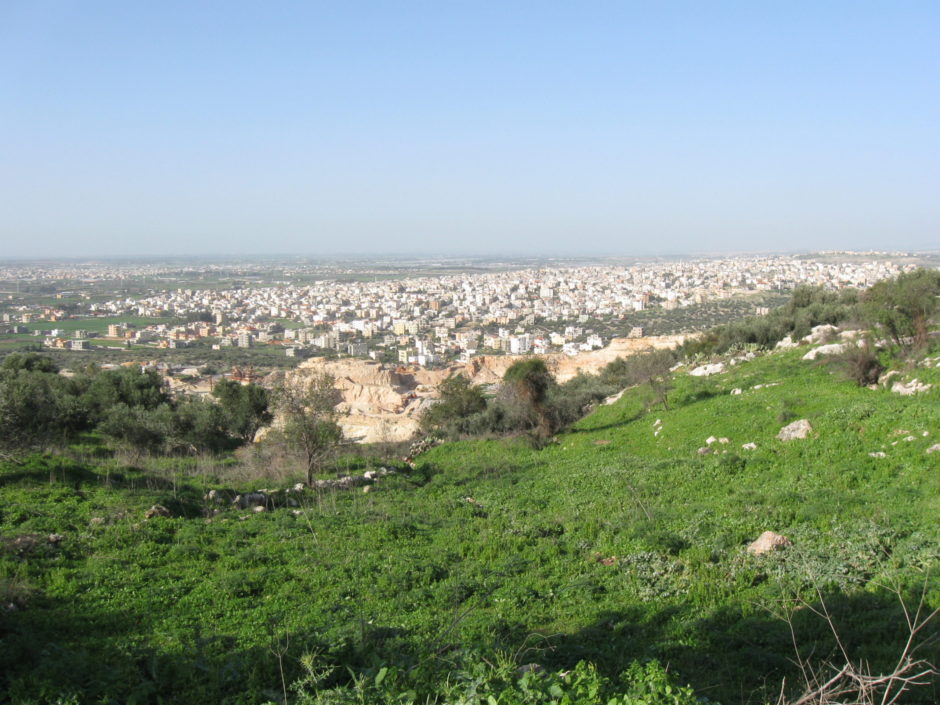President Donald Trump’s Arab-Israeli peace plan, released at the White House on January 28, aroused indignation in Palestinian and Arab circles. Among the ideas that provoked a storm of criticism was one that advocated land swaps between the Israeli government and the Palestinian Authority in populated and unpopulated areas of Israel and the West Bank.
Under Trump’s “Peace to Prosperity” proposal, Israel would annex the Jordan Valley and all its settlements and outposts in the West Bank. In exchange, Israel would hand over some of its own territory to the Palestinians, including a heavily Arab-populated region known as the Little Triangle, which is southeast of the Israeli port of Haifa and abuts the northwest corner of the West Bank.
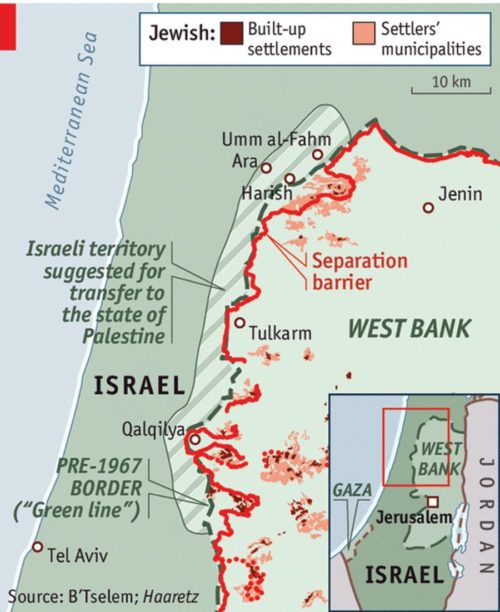
The plan does not call for the physical relocation of its Arab inhabitants, but rather the redrawing of Israel’s border with the West Bank to facilitate their absorption into a Palestinian state.
“These communities, which largely self-identify as Palestinians, were originally designated to fall under Jordanian control during the negotiations of the Armistice Line of 1949, but ultimately were retained by Israel for military reasons, ” the U.S. plan reads.
Jordan ceded the Little Triangle to Israel following the 1948 War of Independence. In return, Israel relinquished territory in the West Bank south of Hebron. Today, some 260,000 of 1.9 million Israeli Arabs live in the Little Triangle, in 14 towns and villages ranging from Umm al-Fahm and Baqa al-Gharbiya to Kfar Qasim and Tira.
Responding to the plan, Israeli Arabs staged protests, while Israeli Arab mayors and members of the Knesset denounced it.
Israeli Arabs regard the idea with the utmost loathing. It would cut them off from jobs, deprive them of social welfare benefits, and perhaps interfere with their ability to enter Israel to visit relatives and friends. It would also revive fears of mass expulsions, which took place during the 1948 Arab-Israeli war and left hundreds of Arab villages in a state of abandonment.
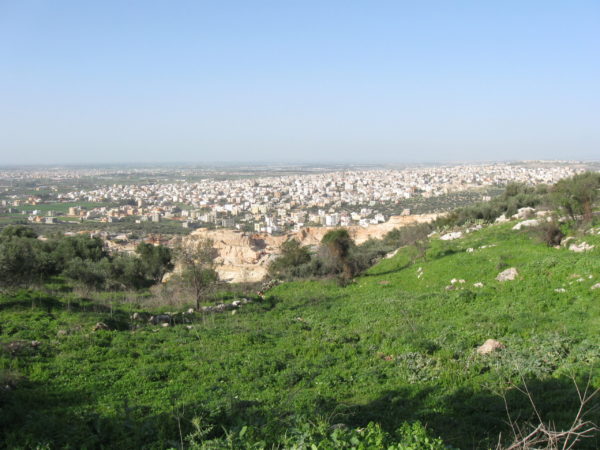
On February 1, thousands of residents of Baqa al-Gharbiya took part in demonstrations. Sha’a Mansour Massarwa, the mayor of Tayibe, a town in the Triangle, expressed fear that Israeli Arabs would lose their citizenship. “We are citizens of Israel,” he said. “Not enemies.”
Ayman Odeh, leader of the Arab Joint List, an Arab political party which holds 13 of 120 seats in the Knesset, rejected it as well.
The unanimous rejection of the idea by Israeli Arabs had an effect.
Benny Gantz, the leader of the centrist Blue and White Party, which won the most seats in the last general election, told Israeli Arabs he did not endorse the idea. He delivered that message shortly after one of his backbenchers, Yael German, tweeted that residents of the Little Triangle are “definitely Israeli citizens, and we have no intention of renouncing you.”
A senior official in Prime Minister Benjamin Netanyahu’s office was quoted as saying that the idea is unrealistic and that Israeli Arabs would not be forced to live in a Palestinian state, even if one is ever established.
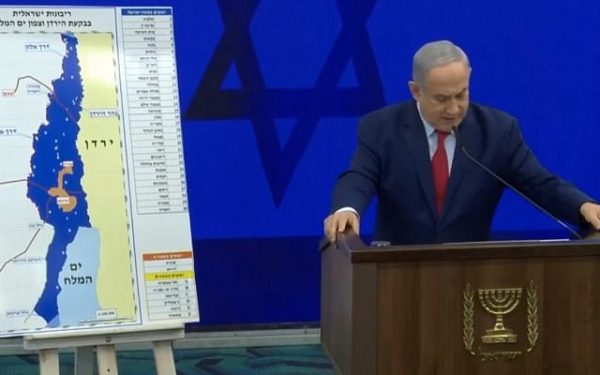
On February 19, Netanyahu himself officially distanced himself from this provision in the peace plan. “We need to erase the idea of transfer,” he said. “There is no transfer. There won’t be a transfer. Not one person, Jewish or Arab, will be uprooted from his home. There won’t be anything like this.”
The Israeli daily Haaretz, however, reported that it was Netanyahu who first raised the idea in discussions with the Trump administration in 2017. He regarded it as a means by which he would compensate the Palestinians for settlement blocs Israel annexed in the West Bank.
David Friedman, the U.S. ambassador to Israel, was reportedly receptive to the idea and pushed for its inclusion in the peace plan.
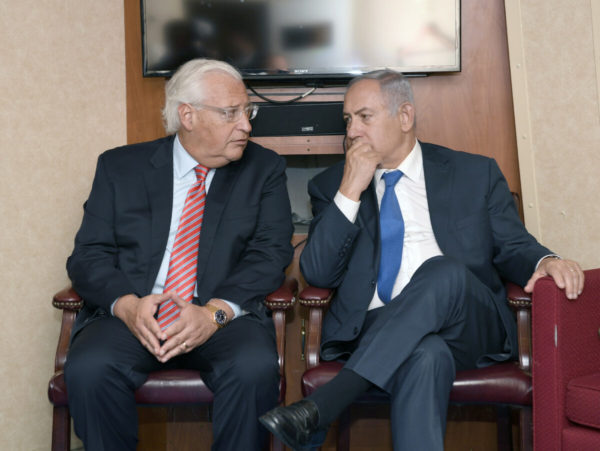
The notion of transferring Arab citizens out of Israel is supported by Avigdor Liberman, the leader of the Yisrael Beytenu Party, which won eight seats in last September’s election and is projected to win an equal number in the March 2 election.
Liberman, the former minister of defence and foreign affairs, brought up the “transfer” idea in a speech in 2004. He envisioned trading the Little Triangle for West Bank settlement blocs. Under his proposal, several hundred thousand Israeli Arabs would be transferred to a future Palestinian state, and the remainder would pledge loyalty to Israel or face expulsion.
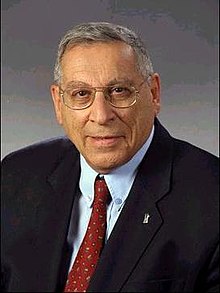
“Transfer” as a concept was popularized by Rehavam Ze’evi, an Israeli general and politician. Ze’evi was assassinated in 2001 by four Palestinian members of the Popular Front for the Liberation of Palestine in retaliation for Israel’s assassination of one of its leaders.
To Israeli Arabs, who form one-fifth of Israel’s population, “transfer” is their worst nightmare, a milder version of 1948 Nakba, when about 700,000 Palestinian Arabs left or were forced to leave their homes in what is now Israel.
With Netanyahu and Gantz having disavowed the idea, they can now rest assured it will remain little more than a blueprint.
